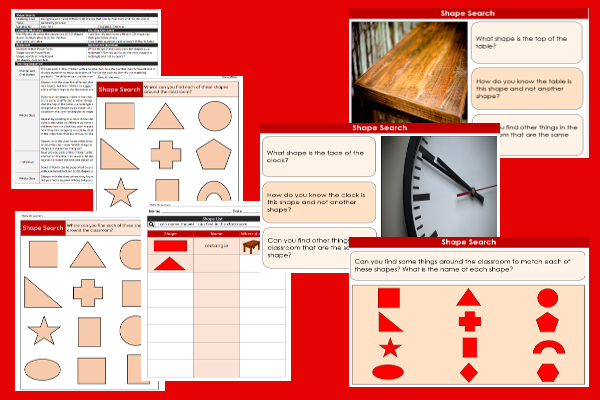Lesson One – Shape Search

This maths teaching pack for Key Stage One gets the children to recognise and name some of the different 2D shapes that can be found in a range of objects around the classroom and other school locations.
The class can identify and explain why a specific shape might have been used to make something for the classroom such as a rectangle for a table top or a circle for the face of a clock.
Download this teaching pack including a lesson plan, classroom activities and an interactive presentation to teach the children to recognise and name some of the different 2D shapes that can be found in a range of objects around the classroom and other school locations
Activities in this teaching pack include a set of differentiated worksheets to recognise and name where different 2D shapes can be found in objects around the classroom and a template to record where different 2D shapes can be found in objects around the classroom,
The interactive presentation gets the children to investigate different 2D shapes that can be found in a range of objects around the classroom.
This lesson is part of a maths scheme of work to get the children to recognise, describe and classify different 2D geometric shapes by their matching properties including their number of sides and vertices. There are teaching activities for shared learning, differentiated worksheets to support independent learning and interactive presentations to introduce concepts and key skills.
-

Harbour Labels
Practise structuring and formatting different word processed documents to describe a range of ships and boats seen in a harbour
-

Islam
Explore and illustrate some of the different stories, beliefs and practices of the Islamic religion including special festivals and sacred texts
-

Farm Prints
Practise and demonstrate different techniques when printing a range of shapes and patterns that can reflect themes and ideas related to farming
-

Towns and Villages
Identify, describe and compare some of the changes to different buildings that have occurred in the school neighbourhood over time
